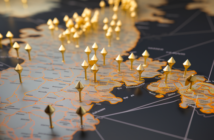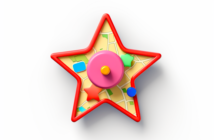Images are often credited enough for a high ranking in search engines. A study showed that 90% of visual information gets transmitted to our brain. Visual Information or Images have much more chances of drawing attention thereafter triggering emotions.
Image Optimization is an art that you want to excel in, if you have an online business. It helps you improve page loading speed, boosts websites SEO ranking and enhances the overall user experience. Now what is Image Optimization? To simply put it, it is the process of delivering high quality images while keeping the smallest size possible.
For good image optimization there are a few practices that are required –
-
Optimize your alt attributes –
Text alternatives to the images when a browser is unable to display them. The alt attribute increases the SEO value of your website. A good alt attribute should include relevant keywords that are apt to the image. It is one of the best ways to improve your search engine presence.
Do not use alt attributes for fancy images, you may get penalized by search engines. Keep the description in simple language.
-
Reduce the image file size –
An Amazon study found out that if their pages take up only one second more to load, they would lose $1.6 billion annually. Google also believes in using page load time as a ranking factor in their algorithm.
The image file size is hugely responsible for taking up time to load. The larger the file size, the more time it takes to load. There are tools available to help you reduce your image file size. Try keeping the image file size under 70 kb for better image optimization.
-
Choose the right file type –
JPEG (or .jpg), GIF(.gif) and PNG are the commonly used file types.
JPEG allows a good enough image quality at a low file size. It is the one type of file that is used by almost everybody. GIF offers lower quality images than JPEG, but they work fine for those plain images on a webpage. PNG images are gaining popularity as a better alternative to GIFs. But still, JPEG works the best for the websites.
-
Use sitemaps –
Image sitemaps will help your images get better attention by Google. Sitemaps are an awesome way to help Google find more of your images.
There is no guarantee that Google will find your images. It only is a positive action towards improving your SEO ranking. Add all the required information using image tags.
-
Name your images descriptively –
Name your images with keywords that are descriptive for good image optimization. Work according to the mentality of the customers. Think and use the keywords that your customers are most likely to search for.
Analytics can help you out in understanding what keyword patterns your customers follow.
-
Choose correct image dimension and product angle –
If you have a small business and you are showcasing your product through images, show multiple angles. For every different product angle, create a unique alt attribute. This way you will capitalize through these extra images.
-
Test your images –
Test what helps you increase your conversion rate. The number of product listings on your category page that works with your customers. Exact number of images you want on your page that will help in increasing the click through rates and sales.
Lastly, ensure that the images are mobile friendly. You will surely see an increase in user engagement and traffic on your site. These practices will provide an enhancement in the quality of your brand image in the minds of your users. It’s all about the right balance between your images and accessibility when it comes to image optimization.
We also have an article on 5 Ways to Optimize Titles




